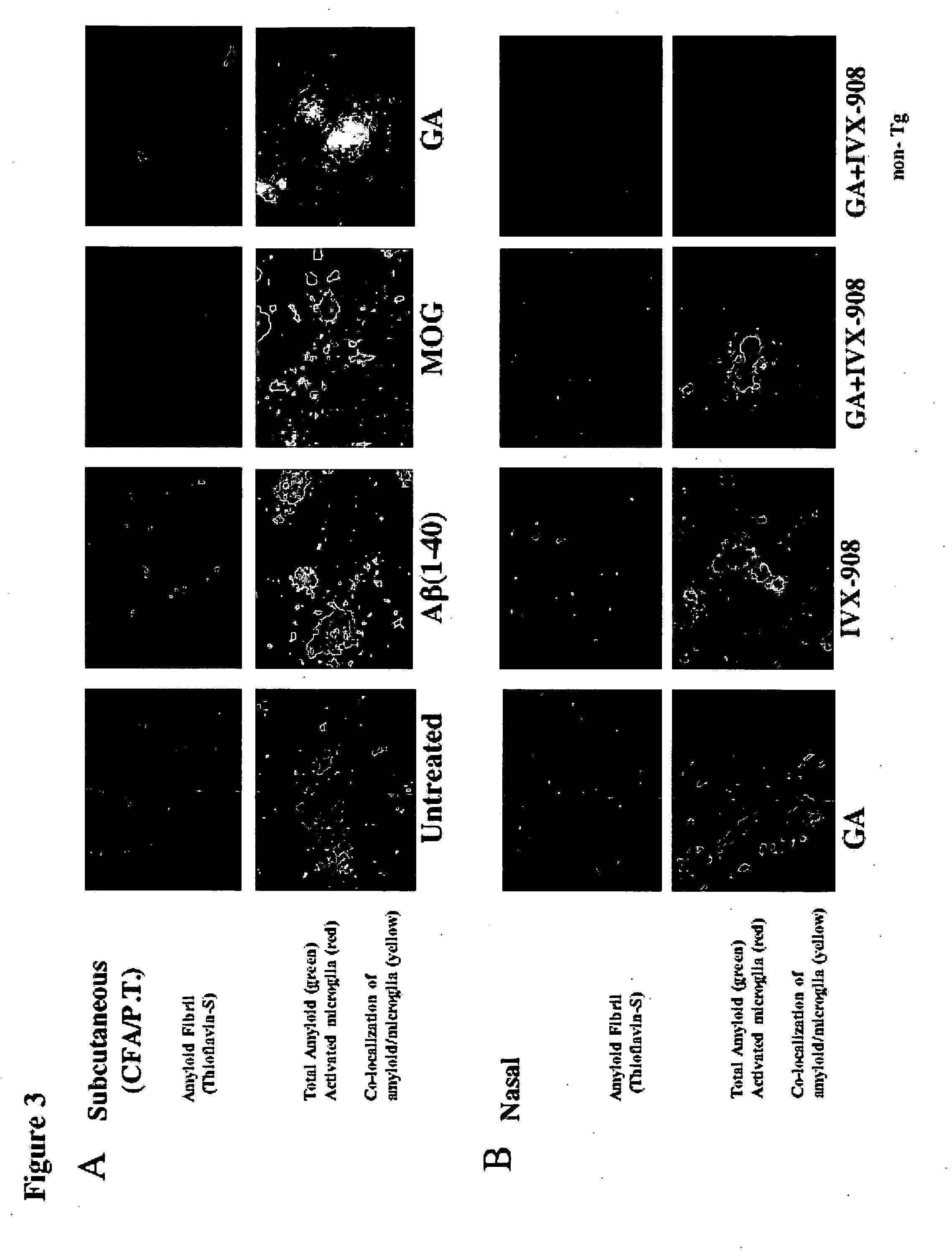Compositions and methods for treating neurological disorders
a neurological disorder and composition technology, applied in the field of compositions and methods for treating neurological disorders, can solve the problems of reducing the effectiveness of therapy, unable to find drugs that provide significant therapeutic benefits, and the difficulty of providing therapy all the more tragic, so as to reduce the amount of existing amyloid plaque, prevent new amyloid plaque, and maintain current amyloid plaque levels
- Summary
- Abstract
- Description
- Claims
- Application Information
AI Technical Summary
Benefits of technology
Problems solved by technology
Method used
Image
Examples
examples
[0094] Amyloid precursor protein (APP) transgenic mice were immunized with myelin oligodendrocyte glycoprotein (MOG) peptide (amino acids 35-55) in complete Freund's adjuvant (CFA) with subsequent administration (injection) of pertussis toxin (PT) to determine their susceptibility to Experimental Allergic Encephalomyelitis (EAE) compared to their non-transgenic littermates. As controls, animals were immunized with bovine serum albumin (BSA) or human β-amyloid peptide (Aβ amino acids 1-40). EAE developed to an identical degree in APP transgenic animals (Mucke et al., Ann NY Acad Sci (777) 82-88 (1996)) and their non-transgenic littermates, and no EAE was observed in animals immunized with Aβ1-40 or with BSA. However, when the brains were examined neuropathologically, there was less staining for Aβ in animals that developed EAE. By quantifying the amount of staining for Aβ fibril in the hippocampus using thioflavin S, a 92% reduction in the MOG-immunized mice was found vs. controls (p...
PUM
| Property | Measurement | Unit |
|---|---|---|
| Aggregation | aaaaa | aaaaa |
Abstract
Description
Claims
Application Information
 Login to View More
Login to View More - R&D
- Intellectual Property
- Life Sciences
- Materials
- Tech Scout
- Unparalleled Data Quality
- Higher Quality Content
- 60% Fewer Hallucinations
Browse by: Latest US Patents, China's latest patents, Technical Efficacy Thesaurus, Application Domain, Technology Topic, Popular Technical Reports.
© 2025 PatSnap. All rights reserved.Legal|Privacy policy|Modern Slavery Act Transparency Statement|Sitemap|About US| Contact US: help@patsnap.com



